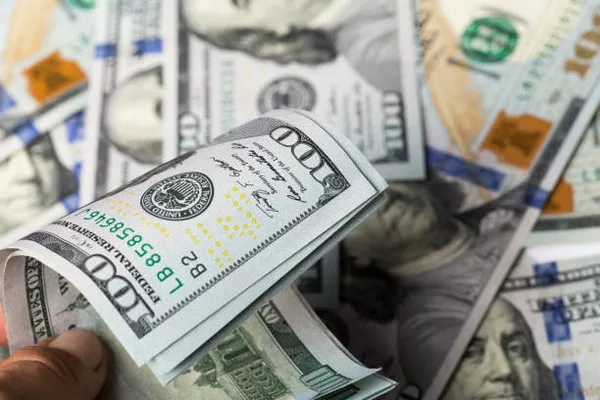In the ever-evolving landscape of global finance, the strength of the U.S. dollar stands as a pivotal indicator of economic stability and international trade dynamics. As the world’s primary reserve currency, the dollar’s strength is a subject of constant scrutiny and speculation. In this article, we delve into the intricate web of factors that contribute to the resilience of the U.S. dollar and attempt to predict how long this strength might endure.
Historical Context
To understand the current strength of the U.S. dollar, it is crucial to examine its historical trajectory. Over the decades, the dollar has weathered various economic storms, emerging as a symbol of stability in times of uncertainty. The post-World War II era witnessed the establishment of the Bretton Woods system, which pegged the dollar to gold, solidifying its status as the world’s primary reserve currency. Although the gold standard was abandoned in 1971, the dollar’s dominance persisted.
Global Reserve Currency Status
One of the primary reasons behind the enduring strength of the U.S. dollar is its role as the global reserve currency. Central banks across the world hold significant reserves in dollars, reinforcing its status as a reliable store of value. The widespread use of the dollar in international trade transactions further cements its importance, as countries prefer to conduct business in a currency that is widely accepted and stable.
Economic Fundamentals
The economic fundamentals of the United States play a pivotal role in determining the strength of its currency. Factors such as GDP growth, employment rates, and inflation levels directly impact investor confidence in the dollar. The United States has consistently demonstrated resilience in the face of economic challenges, with a diverse and dynamic economy that adapts to changing global conditions. Robust economic fundamentals contribute to sustained investor trust in the U.S. dollar, influencing its strength over time.
Monetary Policy
The role of the Federal Reserve and its monetary policy decisions cannot be overstated when analyzing the strength of the U.S. dollar. The Federal Reserve has the dual mandate of maintaining price stability and maximizing employment, guiding its policy decisions. Interest rates set by the Federal Reserve influence the attractiveness of the dollar to investors. Higher interest rates generally make the dollar more appealing, as they offer better returns on investments denominated in the currency. The Federal Reserve’s ability to strike a balance between stimulating economic growth and preventing inflation is crucial in maintaining the dollar’s strength.
Geopolitical Stability
Geopolitical stability is a key factor that influences the strength of any currency, and the U.S. dollar is no exception. The political stability of the United States, coupled with its strong institutions and the rule of law, enhances confidence in the dollar as a safe-haven asset. Investors often flock to the dollar during times of global uncertainty, further solidifying its position as a reliable currency.
Trade Balance
The U.S. trade balance, particularly its current account, also plays a significant role in determining the strength of the dollar. A persistent trade deficit can put pressure on the currency, as it implies a higher demand for foreign currencies. However, the United States’ ability to attract foreign capital through investment and financial instruments helps offset the trade deficit, supporting the dollar’s strength.
Challenges to Dollar Strength
While the U.S. dollar has exhibited remarkable resilience, it is not immune to challenges. The growing national debt, trade imbalances, and the potential erosion of the dollar’s dominance in global trade are all factors that could impact its strength in the long term. Additionally, the rise of digital currencies and alternative financial systems may pose challenges to the dollar’s supremacy in the future.
The Rise of Digital Currencies
The advent of digital currencies, including central bank digital currencies (CBDCs) and decentralized cryptocurrencies like Bitcoin, poses a potential challenge to the dominance of traditional fiat currencies, including the U.S. dollar. Central banks worldwide are exploring the possibility of issuing CBDCs, which could reshape the global financial landscape. The impact of these digital currencies on the dollar’s strength will depend on how effectively traditional financial systems adapt to this technological evolution.
Diversification of Global Reserves
As nations seek to diversify their foreign exchange reserves, there is a gradual shift away from an overreliance on the U.S. dollar. Some countries have expressed a desire to conduct trade in alternative currencies, reducing their dependence on the dollar. While this trend is not an immediate threat to the dollar’s strength, it highlights the evolving dynamics in the international monetary system.
Conclusion
In conclusion, the strength of the U.S. dollar is the result of a complex interplay of historical, economic, and geopolitical factors. Its status as the global reserve currency, supported by robust economic fundamentals, prudent monetary policy, and geopolitical stability, has contributed to its enduring strength. However, challenges such as the rise of digital currencies and a changing global economic landscape could impact the dollar’s dominance in the long term.
Predicting the exact duration of the dollar’s strength is a challenging task, as it depends on how effectively the United States addresses its economic challenges and adapts to emerging trends. As the global financial landscape continues to evolve, maintaining the dollar’s strength will require proactive measures, strategic policymaking, and a commitment to economic stability. In the foreseeable future, the U.S. dollar is likely to remain a cornerstone of the international monetary system, but its long-term strength will depend on the nation’s ability to navigate a rapidly changing economic and technological landscape.


